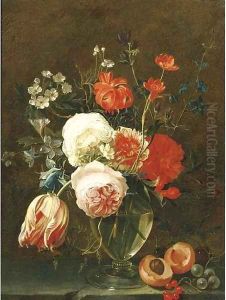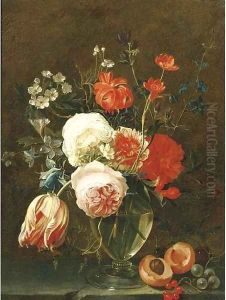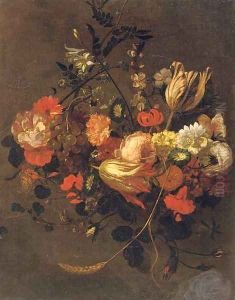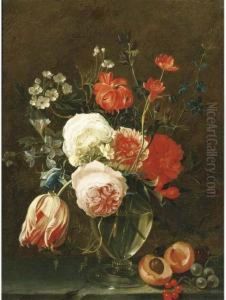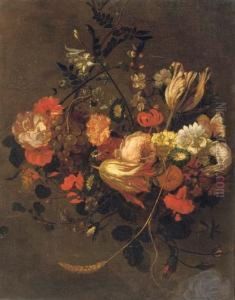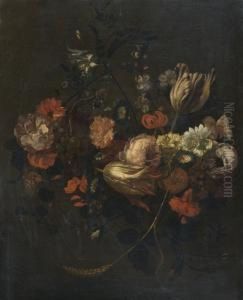Gaspar Thielens Paintings
Gaspar Thielens, sometimes less commonly known as Caspar Thielens, was a Flemish painter born in 1625 in Antwerp, a city that was a significant artistic center during the 17th century in what is now Belgium. Thielens' life and work were embedded in the rich cultural and artistic milieu of the Flemish Baroque period, an era marked by dramatic intensity, exuberant detail, and a deep interest in light effects. Despite his talents and contributions to the Baroque movement, Thielens remains less well-known than some of his contemporaries, such as Peter Paul Rubens and Anthony van Dyck, whose works have overshadowed many artists of the time.
Gaspar Thielens' artistic journey was profoundly influenced by the prevailing trends of his time, including the Baroque style's emphasis on emotion, movement, and contrast. While specific details about his training are scarce, it is likely that he was educated within the vibrant artistic community of Antwerp, possibly studying under or working with some of the prominent artists of the day. This period was characterized by a strong tradition of apprenticeship, where young artists learned their craft in the workshops of established masters, absorbing the techniques and stylistic preferences that they would later adapt in their careers.
Throughout his career, Thielens developed a body of work that reflected the typical themes and interests of the Flemish Baroque, including religious subjects, mythological scenes, and possibly portraits, although much of his work has been lost or remains unidentified. His approach to painting would have been influenced by the innovations of his more famous peers, incorporating dynamic compositions, a rich palette, and a skilled handling of light and shadow to create depth and drama. Thielens' contributions to the art world of his time, though not as widely recognized today, would have been part of the broader tapestry of Flemish painting, contributing to the era's artistic achievements.
Gaspar Thielens died in 1679 in Antwerp. The specifics of his death, like much of his life, are not well-documented, reflecting the common fate of many artists of the period who did not achieve lasting fame. Despite the relative obscurity of his name, Thielens' work remains a testament to the vibrant artistic culture of 17th-century Flanders. His life and art exemplify the themes and styles that defined the Flemish Baroque, offering insights into the period's broader aesthetic movements and the community of artists who contributed to its legacy. Today, scholars and enthusiasts of Baroque art continue to study artists like Thielens to gain a fuller understanding of the era's artistic diversity and richness.
